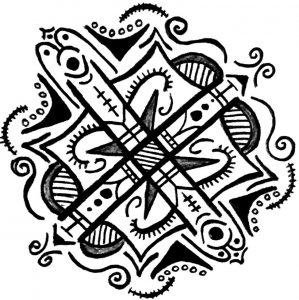Considering the information provided by the field we produced three models which named as “instance”. We learned to produce volumes, defining volumetric relations, generating spatial diversities in 3D by the leadership of the field.
We made the first instance with orthogonal planes.

My first instance has a center and grows around it in a limited area which is defined by the field. It grows with narrow and long, corridor shaped volumes and reflects the changes in the field.
At the second instance, we concentrated on a different zone of the field. We used a major planer element which is 10x70cm in size. We folded the major plane for several times to study non-orthogonal volumetric relations. Other planes related themselves with the major one spacially and geometrically.

I discovered that folded element is so useful to produce volumes of itself while also surrounding the field. Therefore, I used it to surround a specific zone by also making corridor shaped volumes as in the first instance. Moreover, I combine orthogonal and non-orthogonal volumes.
At the third instance, we again concentrated on a different zone which including the sanded acetate. Also, we had to deal with a massive element. The masses should be treated differently than the planar elements.

I used the mass to separate the zone at two parts that one has the acetate which required different reflections than the normal field elements; the other one creates nested volumes by surrounding the mass to prevent that it looks like a distinct element. At acetate part, I did not do enclosure volumes to use the transparency of the acetate.
